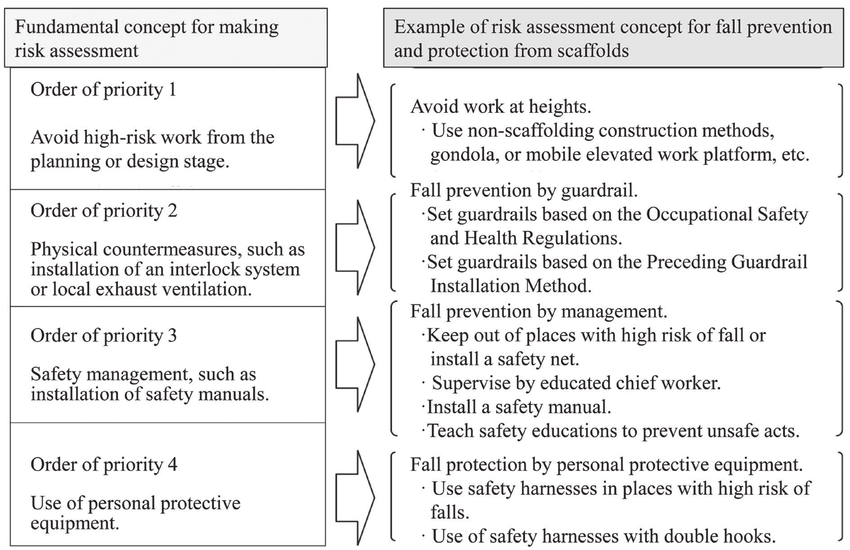The 9-Minute Rule for Dementia Fall Risk
Table of ContentsThe Buzz on Dementia Fall RiskGetting My Dementia Fall Risk To WorkUnknown Facts About Dementia Fall RiskThe Best Guide To Dementia Fall Risk
An autumn threat analysis checks to see exactly how likely it is that you will certainly fall. The assessment typically includes: This includes a series of concerns concerning your total wellness and if you have actually had previous drops or problems with equilibrium, standing, and/or walking.Interventions are recommendations that might decrease your risk of falling. STEADI includes three steps: you for your risk of falling for your risk factors that can be boosted to attempt to avoid drops (for instance, balance issues, impaired vision) to decrease your danger of dropping by utilizing reliable strategies (for example, supplying education and learning and sources), you may be asked numerous concerns consisting of: Have you fallen in the past year? Are you stressed regarding falling?
If it takes you 12 seconds or even more, it might suggest you are at higher risk for an autumn. This examination checks stamina and balance.
The settings will get more challenging as you go. Stand with your feet side-by-side. Move one foot halfway forward, so the instep is touching the big toe of your various other foot. Move one foot completely before the other, so the toes are touching the heel of your various other foot.
The 3-Minute Rule for Dementia Fall Risk
The majority of falls occur as an outcome of several contributing aspects; for that reason, managing the risk of dropping begins with identifying the elements that add to fall threat - Dementia Fall Risk. Some of one of the most relevant danger elements consist of: History of previous fallsChronic medical conditionsAcute illnessImpaired gait and equilibrium, reduced extremity weaknessCognitive impairmentChanges in visionCertain risky medications and polypharmacyEnvironmental aspects can also increase the threat for falls, consisting of: Inadequate lightingUneven or damaged flooringWet or slippery floorsMissing or harmed handrails and get barsDamaged or improperly fitted equipment, such as beds, wheelchairs, or walkersImproper usage of assistive devicesInadequate guidance of individuals residing in the NF, including those that show aggressive behaviorsA effective loss risk administration program needs a thorough medical assessment, with input from all members of the interdisciplinary team

The treatment plan need to also consist of treatments that are system-based, such as those that promote a safe setting (proper lights, hand rails, order bars, and so on). The effectiveness of the interventions must be examined regularly, and the care plan revised as necessary to mirror modifications in the autumn risk evaluation. Carrying out an autumn threat management system using evidence-based finest method can minimize the prevalence of falls in the NF, while restricting the possibility for fall-related injuries.
Facts About Dementia Fall Risk Revealed
The AGS/BGS guideline advises evaluating all adults matured 65 years and older for autumn threat every year. This screening contains asking individuals whether original site they have actually dropped 2 or even more times in the past year or sought medical interest for a loss, or, if they have actually not fallen, whether they really feel unsteady when walking.
People that have dropped when without injury should have their balance and stride examined; those with stride or balance irregularities should get extra assessment. A background of 1 autumn without injury and without gait or balance troubles does not necessitate further assessment past ongoing yearly autumn risk screening. Dementia Fall Risk. An autumn danger evaluation is needed as part of the Welcome to Medicare assessment

Some Known Details About Dementia Fall Risk
Documenting a drops history is one of the quality signs for autumn prevention and monitoring. copyright medicines in specific are independent forecasters of falls.
Postural hypotension can commonly be relieved by decreasing the dose of blood pressurelowering medications and/or quiting medicines that have orthostatic hypotension as a side effect. Use above-the-knee support hose pipe and resting with the head of the bed raised useful content might also decrease postural decreases in high blood pressure. The preferred components of a fall-focused health examination are received Box 1.

A pull time above or equivalent to 12 secs recommends high fall risk. The 30-Second Chair Stand test evaluates reduced extremity stamina and equilibrium. Being incapable to stand from a chair of knee elevation without using one's arms suggests increased fall risk. The 4-Stage Equilibrium test assesses static balance by having the person stand in you could try these out 4 positions, each progressively extra difficult.